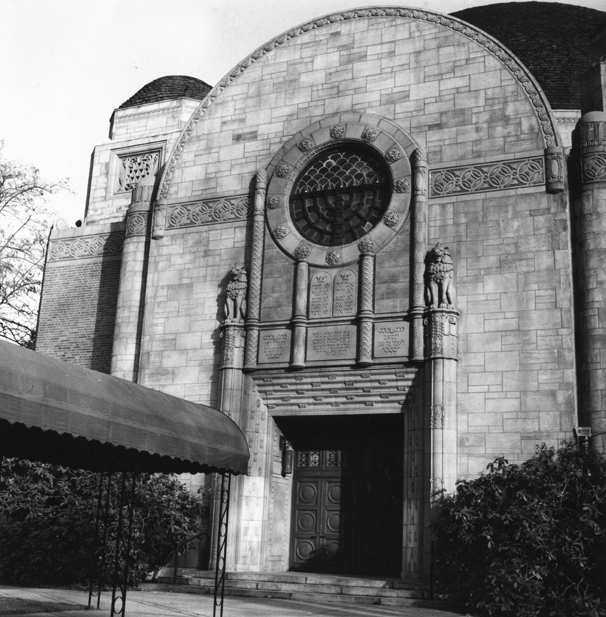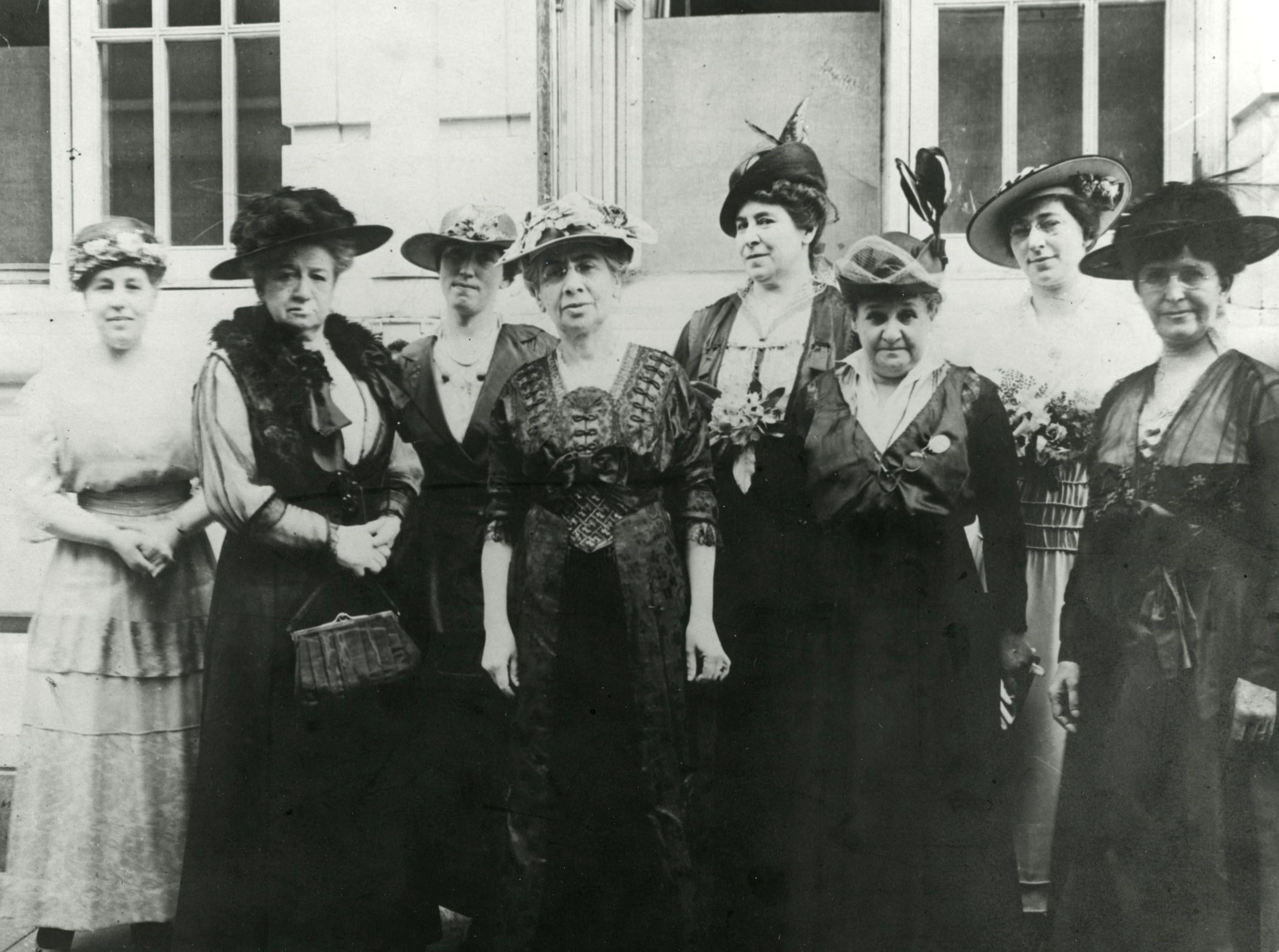Founded in Portland in 1916, Ahavath Achim was the first Sephardic Jewish congregation in Oregon. The earliest members of the congregation came to Oregon from Turkey and the island of Rhodes, descendants of Jews exiled from Spain in 1492. A few arrived by way of Seattle, where a Sephardic community had already been established, beginning in 1901. The community there was formally established in 1914. Others came directly to Portland from the Mediterranean region.
The name of the congregation is Hebrew for “brotherly love.” The activities of the congregation have often emphasized social aspects above religious ritual, and few rabbis have led its services. Since many early congregants knew how to read Hebrew and say the prayers, they felt comfortable conducting services without a rabbi. Over time, this practice became the custom, as well as a necessity, as the synagogue did not always have the financial means to sustain a rabbi. The Portland Jewish community has often supported the congregation by providing educational programs and officiating at marriages and burials.
Congregation Ahavath Achim first began gathering in small numbers in 1910 and formally organized six years later, meeting in the B’nai B’rith building on Mill Street and Thirteenth Avenue in Portland. In 1921, funds were collected and allocated for the purchase of land for a synagogue building on Sherman and Third Avenue in South Portland. The original synagogue was designed in the Moorish architectural style, which recalled the community’s Spanish roots. The building was dedicated on August 31, 1930.
Throughout the 1930s, the congregation remained small, with about eighty-five mostly working-class families who met for prayers. After World War II, Ahavath Achim became involved with philanthropic causes, especially those that supported the State of Israel, and the synagogue hosted talks by political Zionists and leaders of the Mizrachi religious Zionist movement.
In 1961, the City of Portland declared South Portland an urban renewal district, which certified the area as blighted. The city wanted to clear the area to make way for newer, more commercially viable buildings. Unlike other synagogues—such as Sharrie Torah and Ahavai Shalom, which chose to rebuild elsewhere—Ahavath Achim decided to move its building to another location.
LeBeck and Sons facilitated the move, and the congregation took out an insurance policy from Lloyd’s of London. Fewer than a hundred feet into the move, the road began to cave under the weight of the building, and cracks appeared in the support beams of the dome. The insurance company argued that the cracks were there before the move. The congregation sued Lloyd’s of London and eventually won its case.
The damaged building eventually was condemned and demolished, and a new building was constructed on Barbur Boulevard, designed by architect John Storrs. Completed in 1966, the building had a catenary-style dome, acoustically designed so that no electronic amplification was necessary for services, a hallmark of traditional Sephardic practice. The building's white outer walls, red-roofed dome, and relatively small size inspired a nickname: the Barbur Boulevard Beehive.
With the inauguration of the new building, the congregation hired its first rabbi, Michel Albagli. He served from 1966 until October 1967, when he left because of ill health; he was rabbi emeritus until his death in 1988.
Beginning in the 1980s, the congregation experienced a period of diversification. Individuals in the Ashkenazic community became members of the congregation, and there was an influx of Sephardic Jews from North Africa and the Middle East. In 2013, the synagogue had a membership of about seventy families.
The congregation elected its first female president, Renee Ferrera, in 1995 and, for the second time in its history, hired a fulltime rabbi in 2003. Rabbi Shlomo Truzman remained in the position for three years. Michael Kaplan, a New York native with a degree in medieval history from Yeshiva University, was named the third rabbi of the congregation in 2011.
In 2002, the congregation helped begin the Sephardic Cultural Center of Oregon, a nonprofit organization dedicated to promoting and educating the public about Sephardic culture. The center hosts an annual film festival, which highlights films with a Sephardic theme. The congregation also holds an annual picnic and shabbatons (weekend workshops or retreats), and it occasionally cosponsors community events with the Kesser Israel synagogue. Though small, Ahavath Achim remains a pillar of the Portland Jewish community.
-
![Congregation Ahavath Achim, orig. building]()
Congregation Ahavath Achim, orig. building.
Congregation Ahavath Achim, orig. building Courtesy Oreg. Hist. Soc. Research Lib., neg. no.48750
-
![Construction of new building, 1965]()
Construction of new building, 1965.
Construction of new building, 1965 Courtesy Oreg. Hist. Soc. Research Lib., OrHi105558
-
![Preparing for the building to move, 1962]()
Preparing for the building to move, 1962.
Preparing for the building to move, 1962 Courtesy Oreg. Hist. Soc. Research Lib., photograph by Al Jessen
-
![Crack from move (arrows)]()
Crack from move (arrows).
Crack from move (arrows) Courtesy Oreg. Hist. Soc. Research Lib., photograph by Al Jessen
Related Entries
-
![Congregation Beth Israel]()
Congregation Beth Israel
Congregation Beth Israel (CBI) is the oldest and most prominent Jewish …
-
![Congregation Neveh Shalom]()
Congregation Neveh Shalom
Congregation Neveh Shalom is the name of both a synagogue and the congr…
-
![Congregation Shaarie Torah]()
Congregation Shaarie Torah
Shaarie Torah is the name of both a synagogue in northwest Portland and…
-
![Jews in Oregon]()
Jews in Oregon
Jewish Pioneers: Becoming Oregonians In 1869, Bernard Goldsmith, an i…
Map This on the Oregon History WayFinder
The Oregon History Wayfinder is an interactive map that identifies significant places, people, and events in Oregon history.
Further Reading
Kramer, William M. “The History of Congregation Ahavath Achim of Portland.” In Sephardic Jews in the West Coast States: Volume III, edited by William M. Kramer. Los Angeles, Calif.: Western States Jewish History Association, 1996: 628-629.
Singer, Jonathan. “The Sephardic Jews of Portland.” Honors thesis, Ponoma College, 2003.








